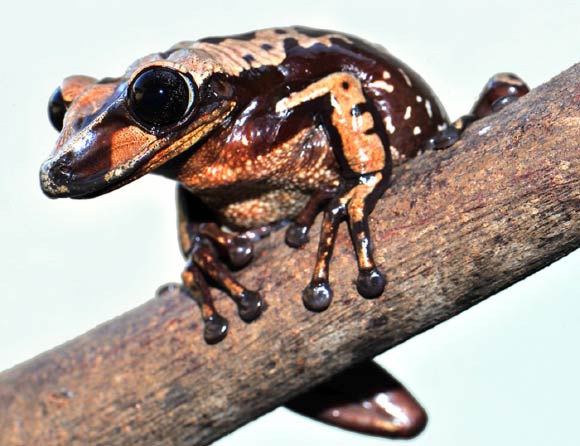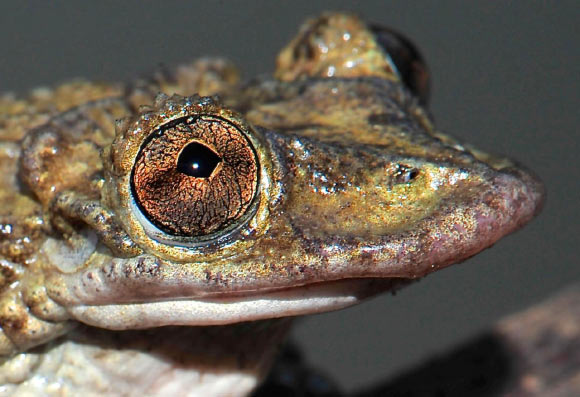A team of scientists has made a surprising discovery about two previously known species of tree frogs from Brazil: they are actually venomous.
Venomous animals have toxins associated with delivery mechanisms that can introduce the toxins into another animal.
Although most amphibian species produce or sequester noxious or toxic secretions in the glands of the skin to use as antipredator mechanisms, they have been considered poisonous rather than venomous because delivery mechanisms are absent.
The frogs in question – the Greening’s frog (Corythomantis greeningi) and the Bruno’s casque-headed frog (Aparasphenodon brunoi) – produce potent toxins and also have a mechanism to deliver those harmful secretions into another animal using bony spines on their heads.
“Discovering a truly venomous frog is nothing any of us expected, and finding frogs with skin secretions more venomous than those of the deadly pit vipers of the genus Bothrops was astounding,” said Dr Edmund Brodie, Jr. from Utah State University, a team member and a co-author on the study published in the journal Current Biology.
The Greening’s frog and the Bruno’s casque-headed frog have both been known for many decades, if not centuries. But scientists have known little of their biology.

The Bruno’s casque-headed frog (Aparasphenodon brunoi). Image credit: Carlos Jared / Butantan Institute.
The team’s calculations suggest that a single gram of the toxic secretion from the Bruno’s casque-headed frog would be enough to kill more than 300,000 mice or about 80 humans.
“It is unlikely that a frog of this species produces this much toxin, and only very small amounts would be transferred by the spines into a wound. Regardless, we have been unwilling to test this by allowing a frog to jab us with its spines,” said lead author Dr Carlos Jared from the Instituto Butantan in São Paulo, Brazil.
“The new discovery is important for understanding the biology of amphibians and their interactions with predators in the wild,” the scientists said.
_____
Carlos Jared et al. Venomous Frogs Use Heads as Weapons. Current Biology, published online August 06, 2015; doi: 10.1016/j.cub.2015.06.061








